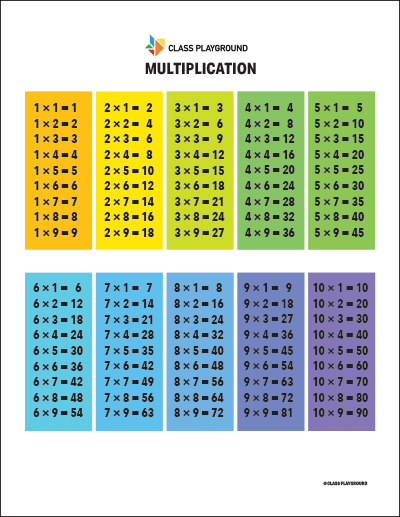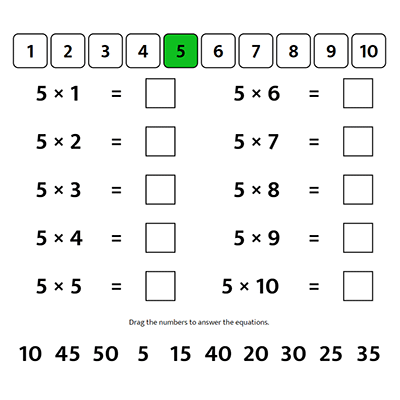What is a Multiplication Table?
A multiplication table is a structured chart, typically in a grid format, that displays the results of multiplying two numbers. It usually ranges from 1 to 10 or 12 on both axes but can be expanded based on the educational level and abilities of the students. This visual aid is crucial for children to learn, understand, and memorize multiplication facts, making it an indispensable tool in elementary mathematics education.
Why Use Multiplication Tables?
Multiplication tables play a pivotal role in elementary education for several reasons:
- Foundation for Advanced Mathematics: Mastery of multiplication is a prerequisite for understanding advanced mathematical concepts such as division, fractions, measurements, and problem-solving. Students who struggle with multiplication often find these more complex areas challenging.
- Real-world Applications: Multiplication isn’t just an abstract concept confined to the classroom – it has practical uses in daily life. From splitting a pizza among friends to calculating the cost of multiple items, multiplication is frequently encountered in everyday situations.
How to Effectively Use Multiplication Tables
- Incremental Learning: Start with smaller numbers such as twos and threes, before gradually moving on to larger ones. This step-by-step approach prevents students from feeling overwhelmed and helps them build confidence. For instance, once they’ve mastered multiplying by two, you can introduce them to the concept of multiplying by three, and so on.
- Pattern Recognition: Encourage students to identify patterns in numbers. For instance, all numbers in the two times table end with either a zero, two, four, six, or eight. Recognizing these patterns can make memorization easier and more fun. Also, understanding that multiplication is commutative (meaning the order of the numbers doesn’t change the result) can help reduce the amount of memorization required.
- Practice and Reinforcement: Regular practice is critical for mastering multiplication. Engage students with various activities and exercises to reinforce multiplication facts and improve recall speed. This could include worksheets, flashcards, online games, or even multiplication songs.
- Real-World Application: Show students how multiplication is used in everyday situations to make learning more engaging and relatable. For example, you could explain how multiplication is used when calculating the total cost of multiple items, or when determining the number of days in several weeks.
Activities
- Multiplication Races: Divide your class into teams and give each team a set of multiplication problems to solve. The first team to correctly solve all their problems wins. This activity promotes teamwork and quick thinking. To make it more challenging, you could use more complex multiplication problems for older or more advanced students.
- Times Table Bingo: Create bingo cards with answers to multiplication problems in each square. Call out multiplication problems, and students have to find and mark the corresponding answer on their card. The first student to get five in a row—across, down, or diagonally—shouts “Bingo!” and wins the game. This activity makes practicing multiplication fun and competitive.
- Multiplication Art: Have students create artwork using arrays or number lines that represent different multiplication facts. For example, they could draw an array with four rows of three apples to represent 4×3=12. This activity not only reinforces multiplication but also allows students to express their creativity.
- Flash Cards: Use flash cards for quick and easy practice. On one side of the card, write the multiplication problem, and on the other side, write the answer. You can also turn this into a game by timing how fast students can go through all the cards and get the correct answers.
- Multiplication Memory Game: Create a set of cards with multiplication problems and another set with the answers. Mix them up and lay them face down. Students take turns flipping two cards at a time, aiming to match a problem with its correct answer. If they make a match, they keep the cards; if not, they turn the cards back over. The student with the most matches at the end of the game wins. This activity helps reinforce multiplication facts and improves memory skills.



